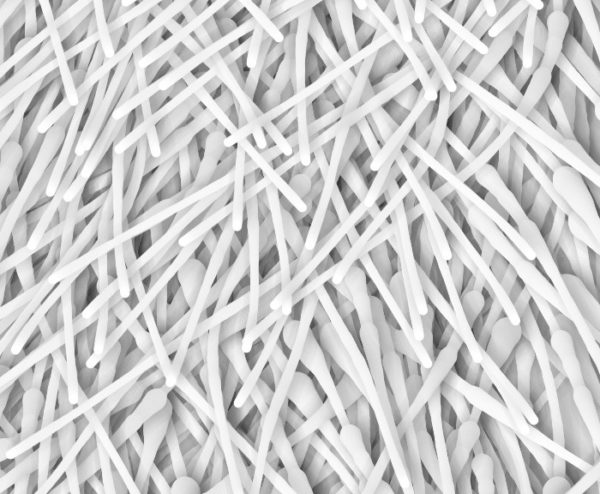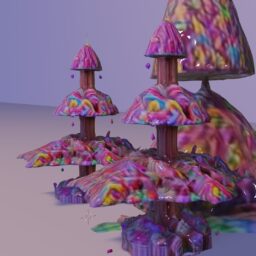This example shows how to construct a p5.js application to run an object oriented approach, using independent particles to draw …
This example shows how to construct a p5.js application to run an object oriented approach, using independent particles to draw the stage canvas buffer. Here is a link to an online demo.

// particle class aP.js
class aP{
constructor( _id,_pos){
// setup the basic parameters of each particle
this.id = _id;
this.pos = _pos;
this.vel = createVector(0,0);
this.ppos = this.pos;
}
// drawing routine for each particle
drawMe(_thick){
noStroke();
ellipse(this.pos.x,this.pos.y,_thick,_thick);
this.pos.x += (noise(this.id*.12,millis()*.0001)-.5)*10;
this.pos.y +=2.;
if( this.pos.y > height){
this.pos.y = 0;
this.pos.x = random(width);
}
}
}
Main Loop
// main script sketch.js
// basic variable definitions
let mic;
const particles = [] ;
let pcount = 120;
let samp = 0;
// -----------------------
function setup() {
createCanvas(window.innerWidth, window.innerHeight);
background(220);
// Create an Audio input
mic = new p5.AudioIn();
mic.start();
// draw a slight smoothed shadow ( CPU INTENSE!!! )
drawingContext.shadowColor = color(0, 0, 0,20);
drawingContext.shadowBlur =20;
drawingContext.shadowOffsetX = 5;
drawingContext.shadowOffsetY = -5;
for(let i=0;i<pcount;i++){
let ipos = createVector(random(width),random(height));
let np = new aP(i,ipos);
particles.push(np);
}
}
// ----------------------- loop function
function draw() {
// read out the current mic amplitude
samp = lerp(samp, mic.getLevel() * 1000 ,.1);
// update and draw each particle
for(let i=0;i<particles.length;i++){
let cp = particles[i];
cp.drawMe(samp+3);
}
}


